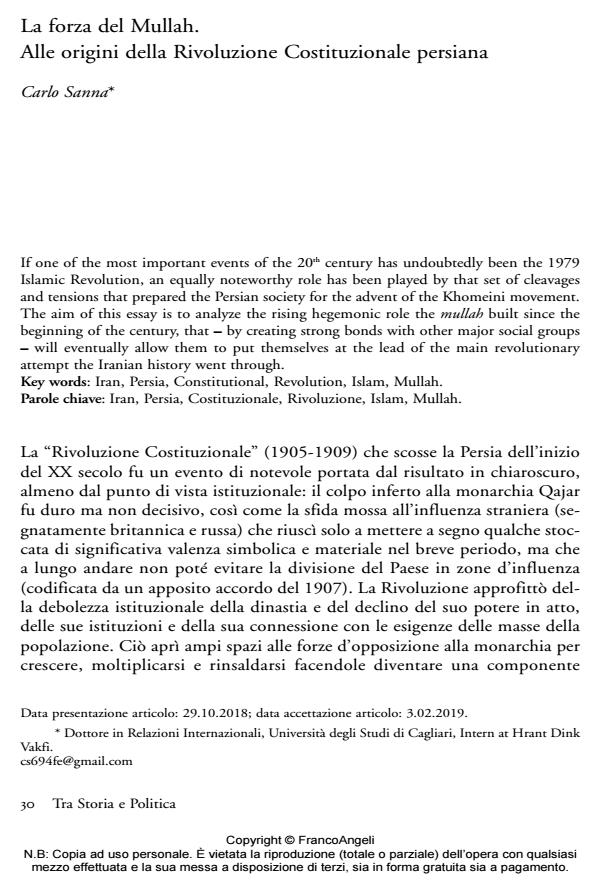La forza del Mullah. Alle origini della Rivoluzione Costituzionale persiana
Journal title HISTORIA MAGISTRA
Author/s Carlo Sanna
Publishing Year 2019 Issue 2018/28
Language Italian Pages 20 P. 30-49 File size 128 KB
DOI 10.3280/HM2018-028004
DOI is like a bar code for intellectual property: to have more infomation
click here
Below, you can see the article first page
If you want to buy this article in PDF format, you can do it, following the instructions to buy download credits

FrancoAngeli is member of Publishers International Linking Association, Inc (PILA), a not-for-profit association which run the CrossRef service enabling links to and from online scholarly content.
If one of the most important events of the 20th century has undoubtedly been the 1979 Islamic Revolution, an equally noteworthy role has been played by that set of cleavages and tensions that prepared the Persian society for the advent of the Khomeini movement. The aim of this essay is to analyze the rising hegemonic role the mullah built since the beginning of the century, that - by creating strong bonds with other major social groups - will eventually allow them to put themselves at the lead of the main revolutionary attempt the Iranian history went through.
Keywords: Iran, Persia, Constitutional, Revolution, Islam, Mullah.
Carlo Sanna, La forza del Mullah. Alle origini della Rivoluzione Costituzionale persiana in "HISTORIA MAGISTRA" 28/2018, pp 30-49, DOI: 10.3280/HM2018-028004